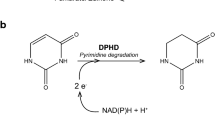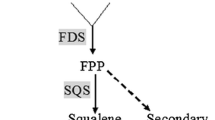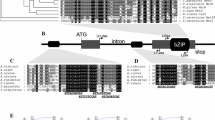Abstract
The ornithine transaminase (otaA) gene of Aspergillus nidulans has been cloned by transformation of the A. nidulans pro – ota – mutant strain with a cosmid gene library. The otaA gene contains two introns and potentially codes for a 453-aa-long protein. The deduced amino-acid sequence is homologous to known ornithine transaminases from Saccharomyces cerevisiae, Plasmodium falciparum, Vigna aconitifolia, rat, mouse and man, particularly in the pyridoxal phosphate-binding domain. The expression of the otaA gene is specifically induced by arginine, and is also under the control of nitrogen-metabolite and carbon-catabolite repression. Regulation of the gene occurs at both transcriptional and post-transcriptional levels. The promoter region of otaA contains putative AREA and CREA binding-sites. Fusion proteins containing AREA or CREA DNA-binding domains bind some of these sites. CREA binding-sites correspond very well to the CREA-binding consensus sequence which is SYGGRG. AREA binding-sites are composed of GATT sequences which are not typical binding sites for the GATA - binding family of transcription factors.
Similar content being viewed by others
Author information
Authors and Affiliations
Additional information
Received: 26 October / 7 December 1998
Rights and permissions
About this article
Cite this article
Dzikowska, A., Swianiewicz, M., Talarczyk, A. et al. Cloning, characterisation and regulation of the ornithine transaminase (otaA) gene of Aspergillus nidulans. Curr Genet 35, 118–126 (1999). https://doi.org/10.1007/s002940050440
Issue Date:
DOI: https://doi.org/10.1007/s002940050440




